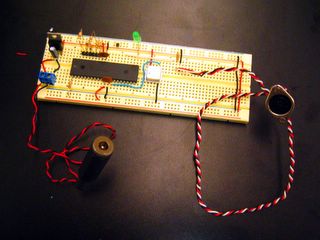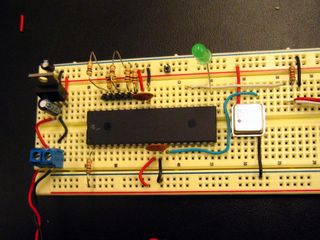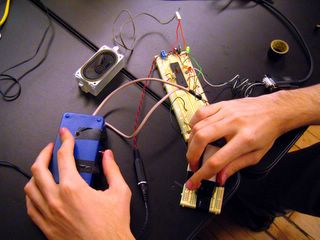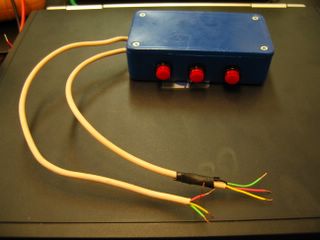Final Project, aka Midterm Upgrade
Upon completing the Midterm, Lazlo and I discussed plans for the final project. We definately wanted something that sounded more like an actual musical instrument. It was decided that we would try to integrate the use of a MIDI synthesizer. In addition, instead of using the same switches from the midterm, we are going to be making a glove/orb switch (refer to pictures).
We put together our MIDI test board and was able to successfully play notes with the different switches (represented by header pins and alligator clips). Refer to Lazlo's code for more details.

MIDI test board


A closer look at the MIDI test board

Now, for the switch we will be outfitting a glove with metal contacts that will touch an orb to complete the circuit. LEDs will be used to verify with the user with button is making contact.

If your hand looked like a bear claw...


Diagram of orb


Bear claw playing orb

So far, we have clustered all of the LEDs, tested that the system will work and soldered together with the help of some perf board. The cluster was tested using a battery pack which consisted of 3 AA batteries and alligator clips. The cluster shares ground and their other end will be connected to their respective metal contact. Note that the "blue LEDs" are not LEDs. The are the incandescent light bulbs off of some old strand of Christmas lights.

LED cluster


Red


Green


Yellow


Blue

Our next step is to find a glove that will be flexible enough to make for comfortable playing of the orb. We're looking into welding gloves or latex dish washing gloves.

















